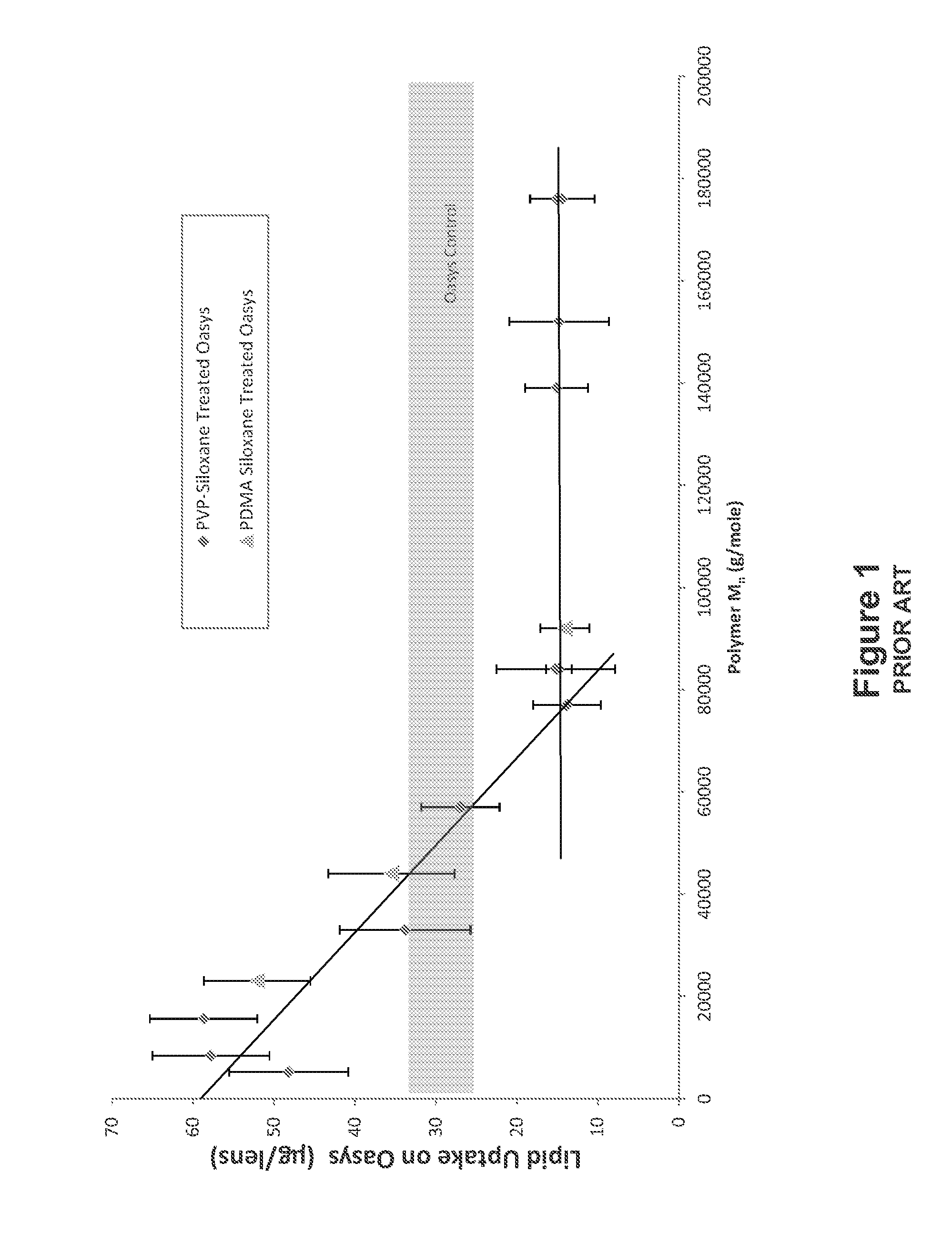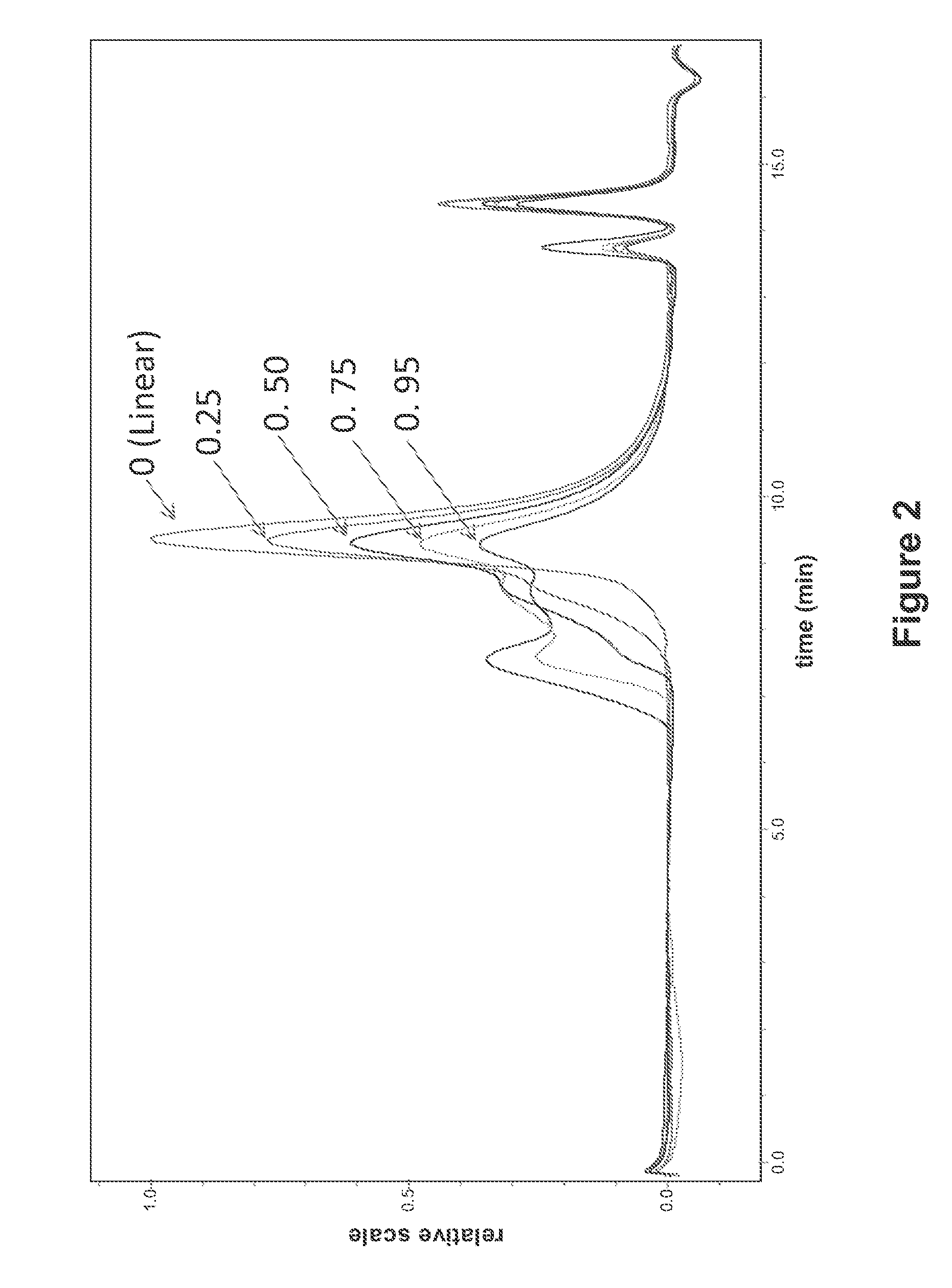Polymers and nanogel materials and methods for making and using the same
a technology of polymer and nanogel, applied in the field of block copolymers, can solve the problems of insufficient use, undetectable contact angle and protein uptake of silicone hydrogel, etc., and achieve the effects of reducing protein and/or lipid update, excellent wettability and lubricity, and reducing lipid uptak
- Summary
- Abstract
- Description
- Claims
- Application Information
AI Technical Summary
Benefits of technology
Problems solved by technology
Method used
Image
Examples
preparation 3
Synthesis of polyDMA-Based Polysiloxane Terminated Block Copolymer With Cross-Links PTHPWCL in the Presence of XG1996TTC and HBTTC
[0285]A series of PDMA-based PTHPWCLs was prepared with variations in the target DPnQ-Segment, cross-linking agent to ξ-primary chain ratio (XL:ξ-PC), and ratio of silicone segment to hydrophilic Q-segment ([A]:[Q]) via RAFT polymerization.
[0286]DMA was obtained from Jarchem and further purified via vacuum distillation. XG1996TTC was synthesized according to Preparation 1, HBTTC was synthesized according to Preparation 2 above. Irgacure 819 was dissolved in n-propanol at a concentration of 10 mg / mL.
[0287]For the synthesis of Example A, the polymerization solution was prepared by dissolving 30 g of DMA, 0.101 g XG1996TTC, 0.260 g HBTTC, and 0.017 g CGI-819 into 30 g of n-propanol in a 20 mL amber glass vial. Next, 0.157 g N,N′-methylenebisacrylamide was added to the polymerization solution. The resulting solution was stirred under ambient conditions until ...
PUM
| Property | Measurement | Unit |
|---|---|---|
| molar ratio | aaaaa | aaaaa |
| polydispersity indices | aaaaa | aaaaa |
| contact angle | aaaaa | aaaaa |
Abstract
Description
Claims
Application Information
 Login to View More
Login to View More - R&D
- Intellectual Property
- Life Sciences
- Materials
- Tech Scout
- Unparalleled Data Quality
- Higher Quality Content
- 60% Fewer Hallucinations
Browse by: Latest US Patents, China's latest patents, Technical Efficacy Thesaurus, Application Domain, Technology Topic, Popular Technical Reports.
© 2025 PatSnap. All rights reserved.Legal|Privacy policy|Modern Slavery Act Transparency Statement|Sitemap|About US| Contact US: help@patsnap.com



